Researchers in Biophotonics team at IPIC are developing a more effective and less invasive way to diagnose and treat colorectal cancer, which is the third most common type of cancer in the world and the second most deadly, in partnership with clinicians at Mercy University Hospital (MUH) and Cork University Hospital (CUH).
They have created a tool for non-invasive surgical guidance and early disease detection using biophotonics technology, a light-based instrument that senses and differentiates tissues more accurately and faster.
The team’s research has just been published in the Nature journal, Scientific Reports, describing how the use of biophotonics can help to radically improve health outcomes for patients as it is a less invasive method and provides more comprehensible information to clinicians and surgeons in real-time, particularly in the area of colon cancer.
Pre-clinical and clinical studies with patients who have gastrointestinal diseases and oral cancer are expected to commence in the MUH and CUH in late 2021.
The Biophotonics team at Tyndall, at UCC, is researching non-invasive techniques that are more accurate and faster than conventional detection methods. Following the initial positive results that validate the idea, they are now developing a probe for colon cancer detection during colonoscopy, which can investigate additional types of biomolecules located at different tissue depths by using extended wavelength range.
This technology will help surgeons to take biopsies at the right places, as currently they have no guidance as to where to request a biopsy, which will obviate the need for multiple biopsies or polypectomies. It could also help identify more subtle abnormalities such as premalignancies invisible through colonoscopes and medical devices.
Further information on Tyndall’s biophotonics teams’ research into colorectal diagnoses and treatment can be seen in Scientific Reports ‘Evaluation of wavelength ranges and tissue depth probed by diffuse reflectance spectroscopy for colorectal cancer detection.’




